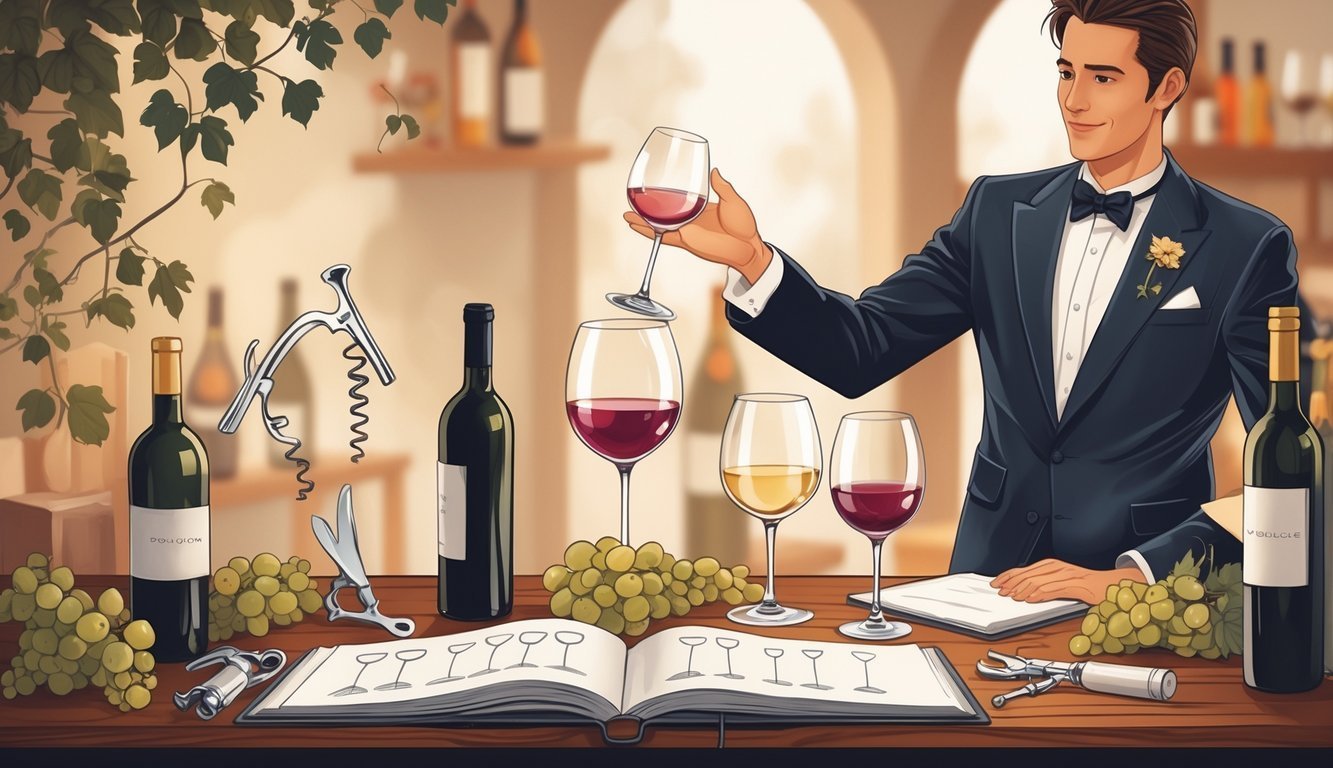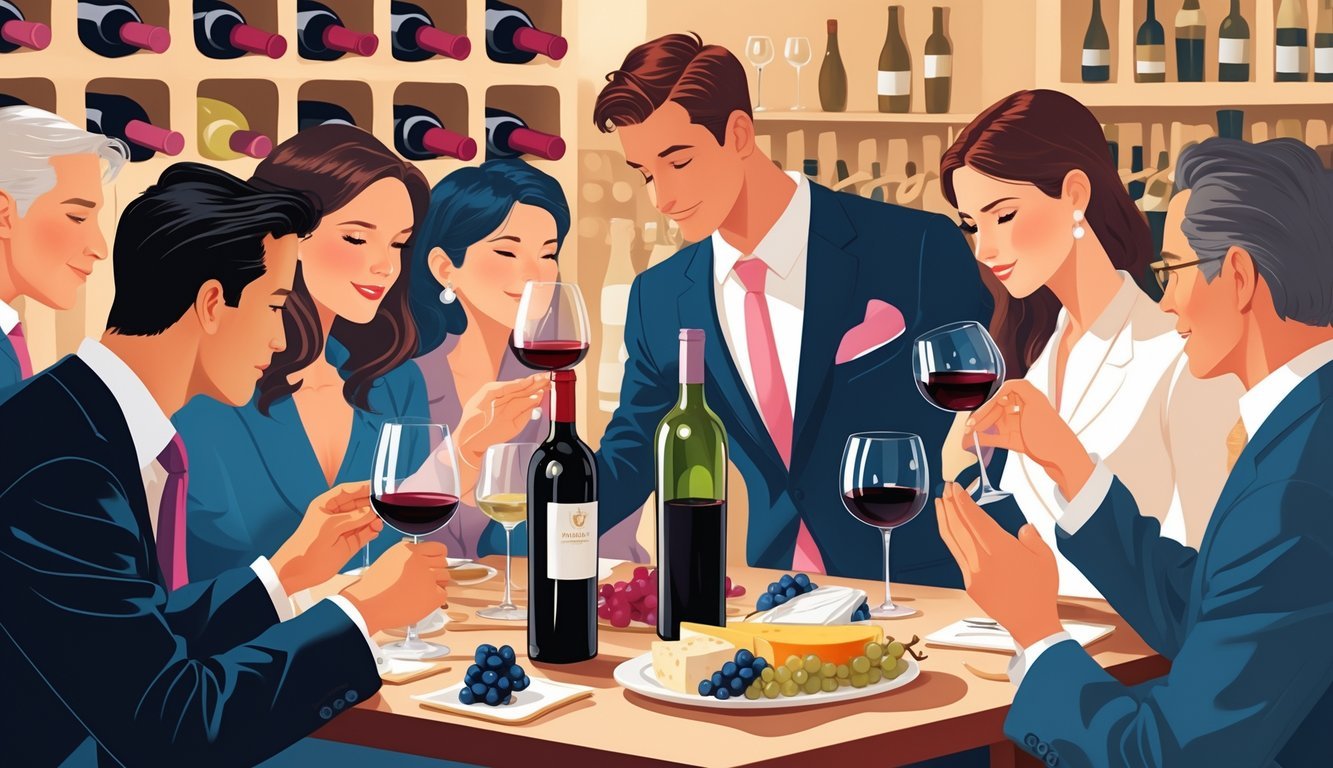PsychNewsDaily Publishers
100 Summit Drive
Burlington, MA, 01803
Telephone: (320) 349-2484
PsychNewsDaily Publishers
100 Summit Drive
Burlington, MA, 01803
Telephone: (320) 349-2484
Wine tasting etiquette includes proper glass handling, serving temperatures, tasting order, and vocabulary for describing flavors, enhancing enjoyment and confidence in wine appreciation.

Getting into wine can feel like stepping into a secret club. There are little rules that matter more than you’d think. Miss a few of these, and you might look like a total newbie—sometimes without even knowing it.
When you know when to sip, how to hold your glass, and the right order for tasting, you’ll not only enjoy wine more but also feel way more at ease.
People often obsess over labels or price tags, but honestly, your own taste should come first. Still, if you follow some basic etiquette—like starting with lighter wines and working up to darker ones—you’ll show you get the flow of wine tasting.
Even how you talk about wine counts. If you avoid the usual slip-ups, you’ll sound more like you know what you’re doing.
Notice how the wine looks, smells, and how you describe what you taste. These details help you dodge rookie mistakes, and you’ll feel a lot more comfortable chatting about wine—or just drinking it—with friends.

Serving, pouring, and enjoying wine the right way can help you dodge common mistakes. The temperature, the glass you use, and how you handle the bottle all change the taste and the impression you give.
Paying attention to these things shows you respect the wine and the people you’re sharing it with.
Temperature totally changes how wine tastes. Red wine actually tastes best a bit below room temperature, around 60-65°F (15-18°C).
If you serve red wine too warm, it can taste boozy or just flat. Too cold, and the flavors disappear.
White wine should be chilled, about 45-55°F (7-13°C). If you chill it too much, you’ll lose the flavors.
Sparkling wines—think Champagne—need to be the coldest, around 40-50°F (4-10°C). That keeps the bubbles fresh.
Skip the freezer for quick chilling. An ice bucket for 20-30 minutes works better and won’t wreck the wine.
Your glass shape actually changes the wine’s smell and taste. Red wines go in glasses with bigger bowls. That gives them room to breathe and lets the aromas open up.
White wine glasses are smaller, which keeps them cooler and highlights those crisp, fruity notes. For sparkling wine, you want a tall, narrow flute. That keeps the bubbles going and focuses the aromas.
Keep your glass clean and clear. Smudges or water spots just distract from the wine’s color and make you look like you don’t care.
When you decant wine, you pour it from the bottle into a decanter. You usually do this for two reasons: to get rid of sediment and to let the wine breathe.
Older reds or big, bold wines often have gritty sediment at the bottom. Pouring slowly into a decanter keeps that out of your glass.
Letting wine breathe means it mixes with oxygen. This softens tannins and brings out more flavor, especially in young reds. Let them sit in the decanter for 30 minutes or so before drinking.
You don’t really need to decant white wines or sparkling wines. They’re usually best straight from the bottle, fresh and cold.

When you taste wine, try to notice its sweetness, acidity, and body. If you describe the aroma and finish well, you’ll sound more confident.
Mixing up grape types or wine styles can trip you up, too.
Sweetness in wine goes from dry to off-dry to sweet. A Riesling, for example, can be a little sweet (off-dry), so don’t write off sweet wines—they’re not always bad.
Acidity gives wine that zingy, bright taste, like biting into a green apple or lemon. It keeps wine lively, especially in whites like Chardonnay. If a wine doesn’t have enough acidity, it just tastes dull.
Body is about how heavy the wine feels in your mouth. Full-bodied wines—like Shiraz or Cab—feel rich and thick. Light-bodied wines, like Pinot Noir, feel more delicate and lighter.
The aroma is what you smell before you even taste. Common scents are fruity (like cherry or berry), floral (rose or violet), earthy (mushroom or forest floor), and oak (vanilla or toast).
Pinot Noir usually smells earthy and fruity. Chardonnay can have more oak and fruit notes, like apple or pear.
Try not to just say “fruity.” Be specific—say “red cherry” or “blackberry.” It sounds like you actually know what you’re smelling.
Finish means the taste left in your mouth after you swallow. Wines with a long finish, like Cabernet Sauvignon, leave flavors lingering. If the finish is short, the flavor fades fast.
You can call the finish smooth, bitter, dry, or fruity. For example, Chianti (made from Sangiovese) often has a dry, slightly bitter finish.
Don’t mix up finish with aftertaste. Finish is about how long and how good the flavor lasts; aftertaste is more about the specific flavors you notice.
Mixing up grape varieties and regions is a classic rookie move. Zinfandel usually comes from California and is full-bodied and fruity. If you call a Zinfandel a Pinot Noir, you’ll lose credibility fast.
Sangiovese is the main grape in Chianti, so you should expect tart cherry flavors and medium acidity. Shiraz (or Syrah) is bold and spicy, with dark fruit notes.
If you know the basics of common grapes, you’ll avoid these mix-ups and sound more confident when you order or talk about wine.

Handling wine the right way makes the whole experience better. Serving at the right temperature, tasting in a sensible order, and understanding basic wine etiquette all help you enjoy and share wine with more confidence.
Hold the glass by the stem, not the bowl. This keeps the wine from getting too warm and lets you see the color clearly.
White wines taste best chilled, around 45-50°F (7-10°C). Reds are better just a bit cooler than room temperature, about 60-65°F (15-18°C).
Start with lighter wines and move to heavier ones. For example, dry whites first, then full-bodied reds, so you don’t overwhelm your palate.
Decanting separates wine from sediment and lets it breathe. This can really help the aroma and taste, especially in older reds or bold young wines.
Always show the bottle label to your guest. Pour a small amount first, wait for their approval, and then fill the glass.
Talk about the taste—mention things like fruitiness, acidity, sweetness, bitterness, and body.
Don’t forget to describe the wine’s aroma.
It also helps to talk about the finish, since that leaves a lasting impression.